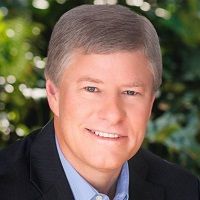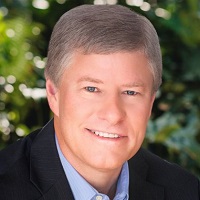Ignoring Your Old 401(k) Could Be a $130,000 Mistake
You'd be shocked at how many people leave a job and let their 401(k) languish at their former employer. Instead, three steps can help safeguard your retirement.


Far too many Americans are putting off retirement planning, relegating it to the same peripheral space in their brains as that missed trip to the gym: We know we need to do it, but something more pressing — more immediate — always takes precedence. However, just as there are adverse health outcomes to a sedentary lifestyle, Americans who haven’t adequately saved for their retirement must face the music one day.
According to a 2022 Federal Reserve survey of consumer finances, only slightly more than half of all Americans (54%) have retirement accounts. Most American workers save for retirement via an employer-sponsored 401(k) account, with one recent survey showing that 6 in 10 workers with access to a 401(k) were contributing. However, that means 40% of their colleagues were opting out — a decision that could hurt them later in life.
Addressing America’s retirement readiness problem will require big ideas, not just from companies but in partnership with the government. Fortunately, there is precedent for that. Two years ago, the federal government passed SECURE 2.0, which enacted 90 new provisions affecting retirement savings plans. One such provision allowed certain employers to automatically have employees opt into their company’s 401(k) plans, placing them in a fund based on age and target retirement date.
From just $107.88 $24.99 for Kiplinger Personal Finance
Become a smarter, better informed investor. Subscribe from just $107.88 $24.99, plus get up to 4 Special Issues

Sign up for Kiplinger’s Free Newsletters
Profit and prosper with the best of expert advice on investing, taxes, retirement, personal finance and more - straight to your e-mail.
Profit and prosper with the best of expert advice - straight to your e-mail.
This change means that employees who haven’t considered retirement won’t needlessly miss out on the benefits of accruing compound interest (though they can still opt out). While SECURE 2.0 helps mitigate some critical issues, it doesn’t address one significant problem.
Recent estimates have shown that 1 in 5 U.S. workers have a forgotten 401(k) account. This trend increased following the Great Resignation, when record numbers of employees voluntarily resigned, beginning in early 2021, during the pandemic. If an employee leaves their old 401(k) behind with a former employer, that company can roll smaller accounts with $1,000 to $5,000 in investments into an individual retirement account (IRA). However, unlike automatically opting into a 401(k) — which places the employee in a fund with an appropriate risk profile based on age — when former employers roll over 401(k) accounts, these funds are put into cash as the default option, earning literal cents on the dollar and accruing high fees.
According to research from Vanguard, among rollover IRAs dating back to 2015, roughly 28% of those investors remained in cash seven years later. For investors under age 55, the long-term benefit of investing in a target-date fund rather than staying in cash would yield roughly $130,000 at age 65 — or an aggregate of $172 billion for all IRA rollover investors.
In an ideal world, the government would pass legislation requiring companies to roll over 401(k)s into a similar growth fund. Absent that, employees must be vigilant about safeguarding their savings. Here are three steps workers who may have a left-behind 401(k) should take to protect themselves.
1. Know what you’ve got
The first step to planning for retirement is understanding what you have and where those investments are. Start by going through old statements. If you can’t locate either hard copies or email statements, contact your former employer — the benefits manager should be able to see whether you participated in the retirement plan during your tenure.
You can also check to locate the company’s Form 550, which will have contact information for your former employer’s plan administrator.
Lastly, you can search the National Registry of Unclaimed Retirement Benefits and the National Association of Unclaimed Property Administrators, the latter of which will help you track down not only unclaimed 401(k)s but other assets, too.
2. Research and decide where to move the money
After you’ve located your 401(k), you’ll want to research your options for reinvesting the funds. Look for low-cost IRA options such as a robo-adviser, which offers lower fees and places investments into an asset-allocation model based on the investor’s age, or a low-cost fund provider, such as Vanguard or iShares, a unit of BlackRock. These providers offer a wide range of index-based investment options with lower fees.
3. Consolidate accounts and consult with a professional
Investors with multiple accounts should consider consolidating them. Not only does this make it easier to keep track of your investments, but if you hit a certain threshold, you could qualify for some type of personalized financial advice, whether it’s working with a dedicated adviser or through a hybrid program that pairs automated investing with access to expert support.
Most financial advisers will provide a free consultation, so take advantage of that to meet with them and better understand your options.
How do we fix America’s retirement readiness problem? Though there isn’t one easy solution, the focus should be on making it easier for people to have greater access to investment options. This is where many of the states are succeeding.
To date, 11 states have auto-IRA enrollment programs — akin to 401(k) automatic opt-in — whereby employees without access to qualified retirement plans through their work are automatically opted into a state-run IRA program and placed in a target-date fund. However, investment options may be limited, so it’s a good idea for all investors to take an active role in their retirement planning and, if possible, consult with a professional.
Investors don’t have to be wealthy to work with a financial adviser. Not all advisers have six- or seven-figure minimums; some will work with clients for as low as $20,000 in investable assets or offer a fee-for-service option to help people just starting out. Investors can also look for financial advisers willing to work pro bono. The Foundation for Financial Planning can help connect low-income individuals and families with a qualified adviser at no cost.
Whatever you do, the most important thing is to figure out your assets, research potential options and move your investments into a growth-oriented vehicle. This is a situation where inertia will cost you.
Related Content
- IRA vs Roth vs 401(k): Which Do You Pick?
- What to Do With Your 401(k) When You Leave Your Job
- Retirement Calculator: How Much Do I Need to Retire?
- Five Ways to Catch Up on Retirement Savings
- 10 Best Target-Date Fund Families
Profit and prosper with the best of Kiplinger's advice on investing, taxes, retirement, personal finance and much more. Delivered daily. Enter your email in the box and click Sign Me Up.

Scott joined Ballast Rock Private Wealth (BRPW) as a Senior Wealth Advisor and CFP® (Certified Financial Planner) in October 2023. At BRPW, Scott specializes in financial planning, wealth management and investment strategies for accredited individuals, families, professionals, business owners and company executives. He became a CFP® in 2011, enabling him to offer a broader array of services spanning investments, insurance, retirement planning, estate planning and tax mitigation strategies. 2019 through 2024, Scott has won the Five Star Wealth Manager award from Five Star Professional.
-
 Holiday Tax Scams: 'Tis the Season to be Wary
Holiday Tax Scams: 'Tis the Season to be WaryTax Scams Navigating tax tricks of the holiday season may be daunting, but don't let that destroy your festive spirit
-
 Metro by T-Mobile Is Giving Away This Samsung Galaxy A16: Which Plans Are Eligible?
Metro by T-Mobile Is Giving Away This Samsung Galaxy A16: Which Plans Are Eligible?Metro by T-Mobile is offering free Samsung Galaxy A16 phones on eligible plans right now. Here’s how the deal works.
-
 I Drive and Collect Classic Cars: Here’s How I Got Started
I Drive and Collect Classic Cars: Here’s How I Got StartedAre classic cars a hobby or an investment strategy — or both? Either way, the vintage car scene is much cooler and more affordable than you think.
-
 I Drive and Collect Classic Cars: Here’s How I Got in the Game Without Spending a Fortune
I Drive and Collect Classic Cars: Here’s How I Got in the Game Without Spending a FortuneAre classic cars a hobby or an investment strategy — or both? Either way, the vintage car scene is much cooler and more affordable than you think.
-
 The $183,000 RMD Shock: Why Roth Conversions in Your 70s Can Be Risky
The $183,000 RMD Shock: Why Roth Conversions in Your 70s Can Be RiskyConverting retirement funds to a Roth is a smart strategy for many, but the older you are, the less time you have to recover the tax bite from the conversion.
-
 A Financial Pro Breaks Retirement Planning Into 5 Manageable Pieces
A Financial Pro Breaks Retirement Planning Into 5 Manageable PiecesThis retirement plan focuses on five key areas — income generation, tax management, asset withdrawals, planning for big expenses and health care, and legacy.
-
 4 Financial To-Dos to Finish 2025 Strong and Start 2026 on Solid Ground
4 Financial To-Dos to Finish 2025 Strong and Start 2026 on Solid GroundDon't overlook these important year-end check-ins. Missed opportunities and avoidable mistakes could end up costing you if you're not paying attention.
-
 Nasdaq Leads as Tech Stages Late-Week Comeback: Stock Market Today
Nasdaq Leads as Tech Stages Late-Week Comeback: Stock Market TodayOracle stock boosted the tech sector on Friday after the company became co-owner of TikTok's U.S. operations.
-
 Are You Putting Yourself Last? The Cost Could Be Your Retirement Security
Are You Putting Yourself Last? The Cost Could Be Your Retirement SecurityIf you're part of the sandwich generation, it's critical that you don't let the needs of your aging parents come at the expense of your future.
-
 I'm an Insurance Pro: It's Time to Prepare for Natural Disasters Like They Could Happen to You
I'm an Insurance Pro: It's Time to Prepare for Natural Disasters Like They Could Happen to YouYou can no longer have the mindset that "that won't happen here." Because it absolutely could. As we head into 2026, consider making a disaster plan.
-
 The Future of Philanthropy Is Female: How Women Will Lead a New Era in Charitable Giving
The Future of Philanthropy Is Female: How Women Will Lead a New Era in Charitable GivingWomen will soon be in charge of trillions in charitable capital, through divorce, inheritance and their own investments. Here's how to use your share for good.